Abstract
1. Muscle strength of the adductor pollicis (AP) was studied throughout the menstrual cycle to determine whether any variation in force is similar to the known cyclical changes in ovarian hormones. Three groups of young women were studied: trained regularly menstruating athletes (trained), untrained regularly menstruating (untrained) and trained oral contraceptive pill users (OCU). In addition a group of untrained young men was studied as controls. 2. Maximum voluntary force (MVF) of AP was measured over a maximum period of 6 months. Ovulation was detected by luteinizing hormone measurements or change in basal body temperature. There was a significant increase in MVF (about 10%) during the follicular phase of the menstrual cycle when oestrogen levels are rising, in both the trained and untrained groups. This was followed by a similar in MVF around the time of ovulation. Neither the OCU nor the male subjects showed cyclical changes in MVF.
Full text
PDF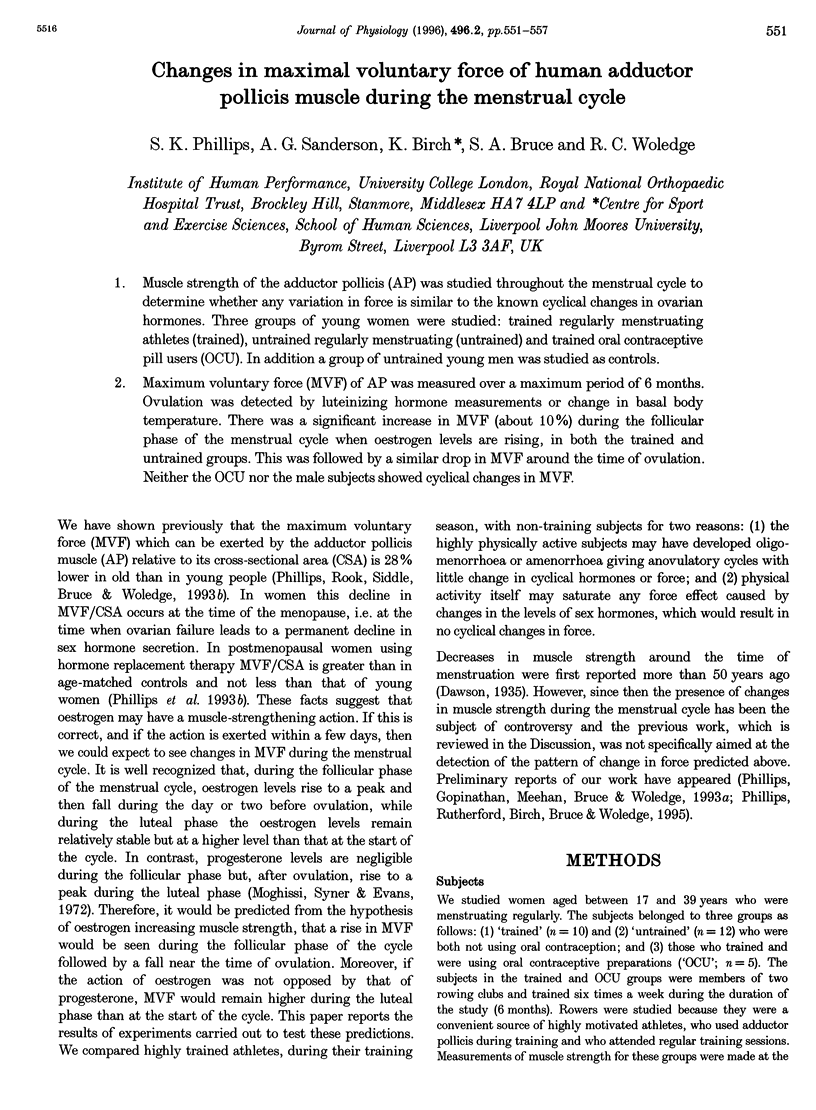
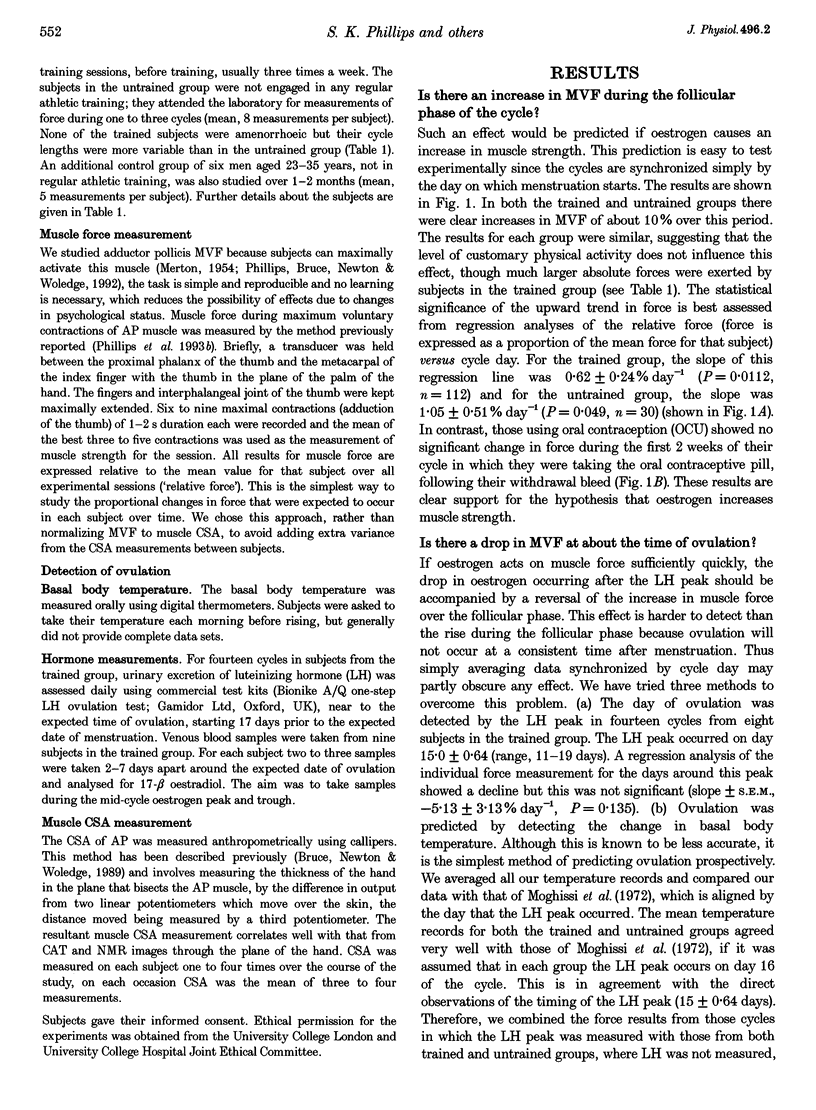
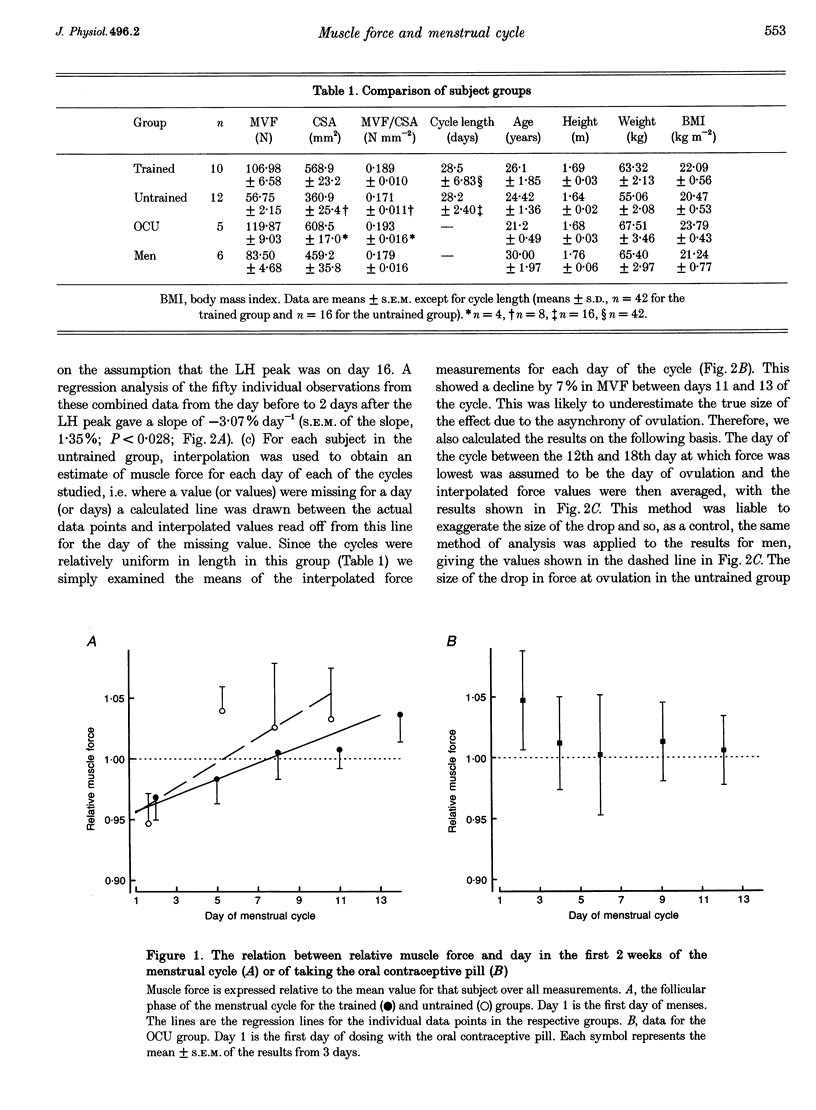
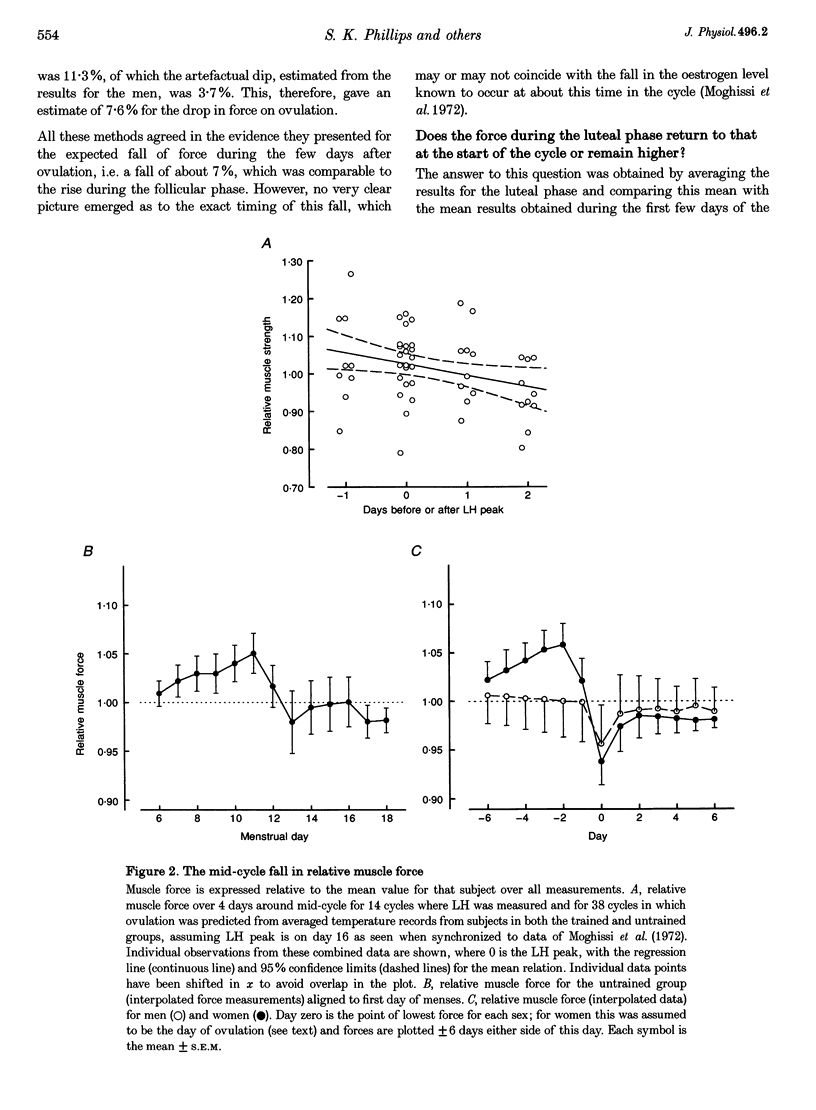
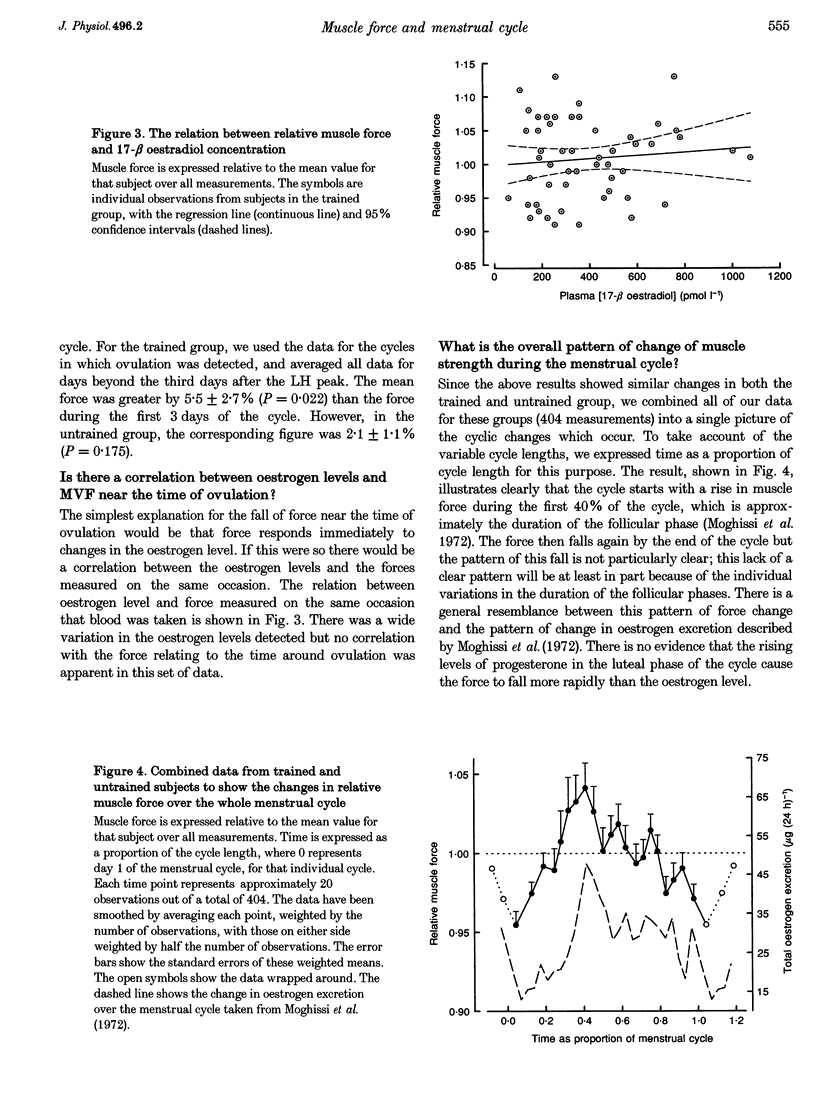
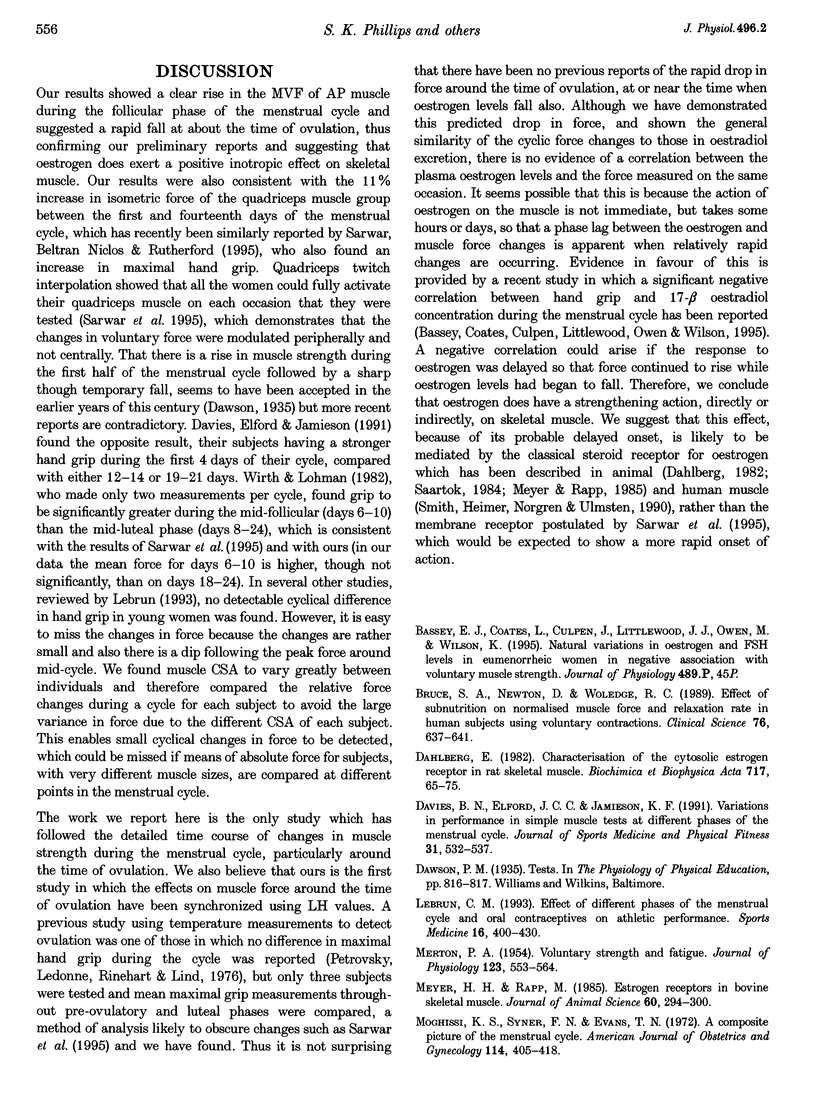
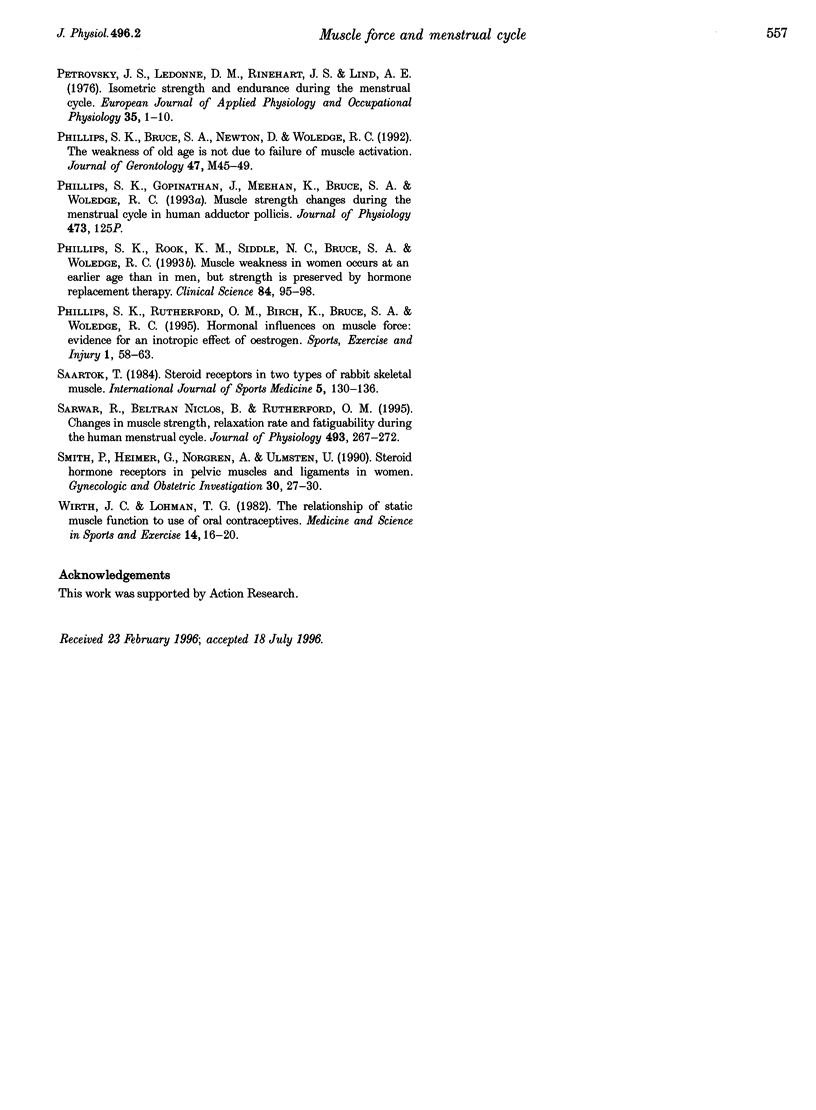
Selected References
These references are in PubMed. This may not be the complete list of references from this article.
- Bruce S. A., Newton D., Woledge R. C. Effect of subnutrition on normalized muscle force and relaxation rate in human subjects using voluntary contractions. Clin Sci (Lond) 1989 Jun;76(6):637–641. doi: 10.1042/cs0760637. [DOI] [PubMed] [Google Scholar]
- Dahlberg E. Characterization of the cytosolic estrogen receptor in rat skeletal muscle. Biochim Biophys Acta. 1982 Jul 16;717(1):65–75. doi: 10.1016/0304-4165(82)90381-6. [DOI] [PubMed] [Google Scholar]
- Davies B. N., Elford J. C., Jamieson K. F. Variations in performance in simple muscle tests at different phases of the menstrual cycle. J Sports Med Phys Fitness. 1991 Dec;31(4):532–537. [PubMed] [Google Scholar]
- Lebrun C. M. Effect of the different phases of the menstrual cycle and oral contraceptives on athletic performance. Sports Med. 1993 Dec;16(6):400–430. doi: 10.2165/00007256-199316060-00005. [DOI] [PubMed] [Google Scholar]
- MERTON P. A. Voluntary strength and fatigue. J Physiol. 1954 Mar 29;123(3):553–564. doi: 10.1113/jphysiol.1954.sp005070. [DOI] [PMC free article] [PubMed] [Google Scholar]
- Meyer H. H., Rapp M. Estrogen receptor in bovine skeletal muscle. J Anim Sci. 1985 Jan;60(1):294–300. doi: 10.2527/jas1985.601294x. [DOI] [PubMed] [Google Scholar]
- Moghissi K. S., Syner F. N., Evans T. N. A composite picture of the menstrual cycle. Am J Obstet Gynecol. 1972 Oct 1;114(3):405–418. doi: 10.1016/0002-9378(72)90617-5. [DOI] [PubMed] [Google Scholar]
- Petrofsky J. S., LeDonne D. M., Rinehart J. S., Lind A. R. Isometric strength and endurance during the menstrual cycle. Eur J Appl Physiol Occup Physiol. 1976 Mar 9;35(1):1–10. doi: 10.1007/BF00444652. [DOI] [PubMed] [Google Scholar]
- Phillips S. K., Bruce S. A., Newton D., Woledge R. C. The weakness of old age is not due to failure of muscle activation. J Gerontol. 1992 Mar;47(2):M45–M49. doi: 10.1093/geronj/47.2.m45. [DOI] [PubMed] [Google Scholar]
- Phillips S. K., Rook K. M., Siddle N. C., Bruce S. A., Woledge R. C. Muscle weakness in women occurs at an earlier age than in men, but strength is preserved by hormone replacement therapy. Clin Sci (Lond) 1993 Jan;84(1):95–98. doi: 10.1042/cs0840095. [DOI] [PubMed] [Google Scholar]
- Saartok T. Steroid receptors in two types of rabbit skeletal muscle. Int J Sports Med. 1984 Jun;5(3):130–136. doi: 10.1055/s-2008-1025894. [DOI] [PubMed] [Google Scholar]
- Sarwar R., Niclos B. B., Rutherford O. M. Changes in muscle strength, relaxation rate and fatiguability during the human menstrual cycle. J Physiol. 1996 May 15;493(Pt 1):267–272. doi: 10.1113/jphysiol.1996.sp021381. [DOI] [PMC free article] [PubMed] [Google Scholar]
- Smith P., Heimer G., Norgren A., Ulmsten U. Steroid hormone receptors in pelvic muscles and ligaments in women. Gynecol Obstet Invest. 1990;30(1):27–30. doi: 10.1159/000293207. [DOI] [PubMed] [Google Scholar]
- Wirth J. C., Lohman T. G. The relationship of static muscle function to use of oral contraceptives. Med Sci Sports Exerc. 1982;14(1):16–20. doi: 10.1249/00005768-198201000-00003. [DOI] [PubMed] [Google Scholar]


